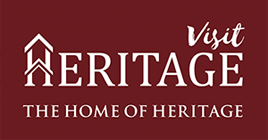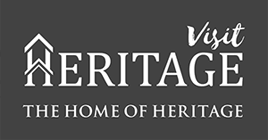To build your own Itinerary, click  to add an item to your Itinerary basket.
to add an item to your Itinerary basket.
Already saved an Itinerary?
| Added...: | |
|---|---|
| Nottinghamshire Day Festival 2024 | |
| Snowdrop days at Fullers Mill | |



You are here: UK History > The Middle Ages > England in the Middle Ages > The Early Middle Ages
At the start of this period of time, England was part of Britannia and was seeing the aftermath of the Roman withdrawal and eventual collapse of the Roman Empire. The Romans had invested a lot of money in England, particularly with the creation of trade channels, road networks and towns and villages. After the withdrawl of the Romans, the country saw an influx of migrants from places like Germany and France, who brought their own language and culture, which would go on to create what we know as Old English. New cultural identities also started to emerge, like an Anglian culture in the eastern areas of England, compared to a Saxon one in the south. The idea of a monarchy also began to emerge, with the leaders of the divided kingdoms beginning to refer to themselves as kings.
At the start of this period of time, England was part of Britannia and was seeing the aftermath of the Roman withdrawal and eventual collapse of the Roman Empire. The Romans had invested a lot of money in England, particularly with the creation of trade channels, road networks and towns and villages. After the withdrawl of the Romans, the country saw an influx of migrants from places like Germany and France, who brought their own language and culture, which would go on to create what we know as Old English. New cultural identities also started to emerge, like an Anglian culture in the eastern areas of England, compared to a Saxon one in the south. The idea of a monarchy also began to emerge, with the leaders of the divided kingdoms beginning to refer to themselves as kings.
The Norman invasion of England led to the Anglo Saxons being replaced by a French and Norman elite, who took over the existing system and put their own in place. These new rules introduced a feudal approach, which, though stopped the slavery of the Roman Empire, did instead create serfs, a population of unpaid labourers. Women, who until this point, had a much larger role in leadership, also saw changes to their place in society, as leadership began to shift to be patriarchal in nature.
England’s population more than doubled during this time, seeing a huge expansion in towns and cities and more opportunity for trade with Europe. William the Conqueror might be known for defeating the English and uniting the land under one throne, but his rule was not all plain sailing. There was civil unrest and violent conflicts at times, with William commissioning several castles and defensive forts to help keep the population under control.
At this time, society was mostly hierarchical, beneath the king were nobles, the most powerful of which maintained their own courts and lands and were known as Aldermen. Freemen formed the next level of society and would control businesses, geburs were the name given to those who worked the land and the very lowest people in society were kept as slaves and held minimal rights.
Following William I, there was a succession of monarchs hailing from Normandy, including two of his sons, William II and Henry I before an age of civil war, known as the Anarchy broke out over the succession which was fought between Henry I’s daughter Matilda, who had previously been married to the Holy Roman Emperor, and his nephew Stephen. Eventually, Matilda’s son would be named king as Henry II, the first of the Angevin rulers of England, so called because he was also the Count of Anjou. With these rulers more and more influence from Europe came to Britain, including language and trade. This period is known as the High Middle Ages.
The Kings of the time built up their own laws, but these were rarely written down. In the early part of the Middle Ages, there would be assemblies called moots who gathered to apply the law in particular cases. These were later replaced by Hundred Courts, which served larger areas and also the church, who also had their own local courts. The legal system depended on a system of oaths, with the word of a member of the nobility being worth twelve times that of a peasant.
If fines were issued, these were compared to the oath value of the individual. Also at this time, blood money was a way of ending long running feuds or vendettas.
Read Less© Visit Heritage 2025. All Rights Reserved


We are now retrieving your search results. Please wait, this may take up to 30 seconds


![]()
Supporting the Destination
![]()
Quality Guarantee
We are now retrieving real time availability results. Please wait, this may take up to 30 seconds.

.png)





